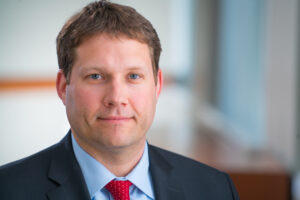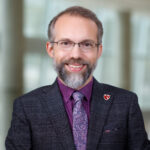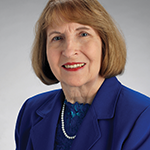 The diversity of the ARP’s membership is what originally drew Adam Goode, PT, DPT, PhD, to the organization, enticed him to begin volunteering more than a decade ago and now galvanizes him as he becomes the new ARP president.
The diversity of the ARP’s membership is what originally drew Adam Goode, PT, DPT, PhD, to the organization, enticed him to begin volunteering more than a decade ago and now galvanizes him as he becomes the new ARP president.
Dr. Goode’s career spans specializations ranging from physical therapy to chronic pain and epidemiology. He earned his AS as a physical therapist assistant from the College of West Virginia, Beckley, in 1999, a BS in natural science from Mountain State University, Beckley, W.Va., in 2002, and a DPT in 2005 from Duke University, Durham, N.C., where he became a faculty member. He then added studies in epidemiology to his repertoire and completed an additional doctorate in epidemiology from the University of North Carolina, Chapel Hill, in 2011.
Currently, Dr. Goode holds two positions at Duke: vice chair of clinical research and epidemiology in the Department of Orthopaedic Surgery, and professor of orthopaedic surgery. His research centers on chronic low back pain, including recent projects using biomarkers, magnetic resonance imaging and artificial intelligence to gain insights into low-back osteoarthritis and its symptoms.

Dr. Goode
His volunteer work for the ARP includes serving as a member of the Clinical Focus Course Task Force, Executive Committee, Committee on Research, Committee on Ethics and Conflict of Interest, and RheumPAC; chair of the Research Subcommittee; and co-chair of the joint ACR/ARP Committee on Membership and Awards.
The Rheumatologist (TR) spent some time with Dr. Goode to learn more about his introduction to, and continuing involvement in, the ARP, how he views the association’s strengths, and what he has planned as its new president.
TR: You have had quite a varied professional career. What was the path that took you from being a physical therapist assistant to earning doctorates in physical therapy and epidemiology, and to conducting research?
Dr. Goode: My journey started as a licensed physical therapist assistant in a southern West Virginia orthopedic outpatient clinic that focused on chronic pain, especially chronic low back pain. I became interested not just in physical therapy as a career, but also in understanding and helping patients with chronic pain regain function and return to work. Before long, I decided to pursue my DPT at Duke, and on completion, I immediately joined the faculty, doing a combination of clinical practice and teaching in the physical therapy program.
During that time, I also became interested in doing research, which led me to [obtain] my epidemiology degree and also to start work in the area of spinal osteoarthritis. It was that research that connected me with a couple of my mentors, who in turn introduced me to the ARP and ACR. They were Jan Richardson and Joanne Jordan. [Note: Jan Richardson, PT, PhD, OCS, FAPTA, is faculty emeritus at Duke’s School of Medicine and former president of the ARHP, now the ARP. Joanne M. Jordan, MD, MPH, is emeritus professor of medicine at the University of North Carolina Division of Rheumatology, Allergy, and Immunology, and has been active in the ACR, including serving on its Board of Directors.]
TR: What was it about your first experiences with the ARP that attracted you?
Dr. Goode: Not only in clinical practice, but also in research, I’ve always been a member of, and an advocate for, interdisciplinary teams, and that’s what I saw as the ARP focus: bringing together a lot of different disciplines to address common goals, whether it be helping patients in the clinic and addressing research questions. It is also what I like about the ACR. There is a lot of power in bringing together different-minded folks, especially when we are dealing with the complexities of rheumatologic conditions.
TR: You have been volunteering for the ARP since 2013 on committees dealing with such topics as research, clinical practice, ethics and advocacy, and have also volunteered for the ACR, currently serving as an invited guest on its Executive Committee and its Board of Directors. Which of your volunteer activities stands out to you?
Dr. Goode: This past year, an experience that really resonated with me was serving on the Membership and Awards Committee. The president elect of the ACR and of the ARP are co-chairs on that committee, so I was co-chair with Carol Langford, MD, MHS [see p. 10]. On this committee, we organized and selected the honors of distinction and awardees for the 2024 slate and, in so doing, we and the other members of the committee conducted in-person deliberations, which was an excellent opportunity to learn more about our membership and the many different ways to approach rheumatologic conditions through education, practice and research.
What is also important about the Membership and Awards Committee is that it is the only committee that is jointly chaired by members of the ACR and ARP. That allowed Carol and I to get to know one another really well, which is great because we’ll be working together as concurrent presidents of the two organizations. Hopefully, we’ll see more committees that follow this ARP/ ACR joint co-chair model in the future.
TR: What initiatives do you hope to stress in the coming year as ARP president?
Dr. Goode: As we go forward with our strategic planning process for ARP, we will continue to learn about our interdisciplinary community and how we can work together to advance rheumatology. That is a key part of one of the areas deemed particularly significant by the ARP and ACR, which is the educational resources we provide to our members. Those resources are important in advancing different practice areas for our patients. It takes a lot of work to both keep those educational resources updated and create new resources that are relevant to nurse practitioners (NPs), physician associates/physician assistants (PAs), advanced practice providers (APPs), and all of our members, so they can keep up with the demands they face today, even in light of current and projected workforce shortages.
Another focus for the coming year will be membership models. We’ve already developed some models over the past couple of years, and one of those is a physician-practice team model that we have piloted. In this model, the team includes the physician and other rheumatology professionals, such as PAs, NPs and physical therapists. It has worked well on many levels, including to underscore the benefits offered by the ARP, which helps to increase the number of members and to provide access to our educational resources to more healthcare professionals. That is good for the ARP, ACR, our field and our patients. There are now opportunities to expand on that model in different directions, perhaps to encompass physical therapy practices or other groupings, but that will require continued evaluation of those models throughout the next year and onward. I am looking forward to that.
TR: Are there any other initiatives you hope to emphasize in the coming year?
Dr. Goode: Another ongoing initiative is to increase the visibility and awareness of the diversity of rheumatology professionals, and what they can add to the healthcare team. That continues to be a priority for ARP and our interdisciplinary community and should be on the mind of every ARP president.
And of course, the workforce shortage is a big challenge, and that shortage is not only in the overall number of rheumatology professionals, but also about their distribution, because many areas remain underserved. We will continue to consider ways to address that as well.
TR: Let’s change gears and talk about you personally. What is something that ARP members may not know about you and that you’d be willing to share?
Dr. Goode: Well, since I was in high school, I have thoroughly enjoyed playing table tennis. In fact, there’s a ping-pong table sitting right around the corner from my office. That hobby has been sidelined a bit because I have an 8-year-old son, so I am instead constantly throwing around the football or playing sports with him. That has been great, but I am looking forward to getting him into table tennis. He’s not quite ready yet, but I think we’re close!
Leslie Mertz, PhD, is a freelance science journalist based in northern Michigan.


